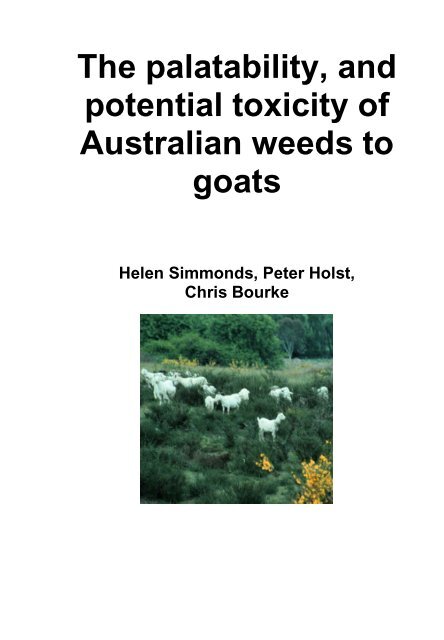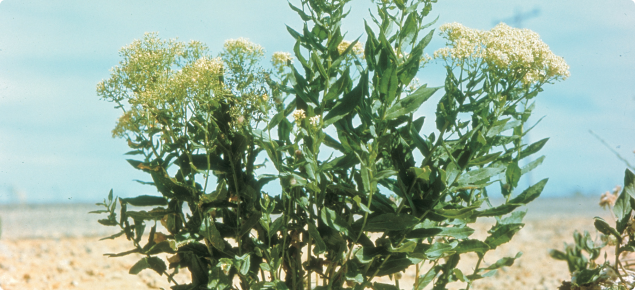Hoary Cress Seed Viability
Deeply buried seeds showed greater viability than shallow seed. A single plant can produce 1000-5000 seeds with 80 viability.

Pin On Noxious Weeds Are Our Muse
Fortunately the viability of hoary cress seeds is only about 3 years.
Hoary cress seed viability. Regrows from perennial rootstock. Spreads by buds on spreading roots movement of root sections and by seed. Germination of hoary cress markedly decreased as salt and drought stress increased.
Studies have shown that the viability of hoary cress seeds in the field is greatly reduced after three years. The plants emerge in early spring with stems emerging from the center of each rosette in late April. A single hoary cress plant can produce between 1000 and 5000 seeds which have 80 viability.
Seed capsules are heart-shaped with two small flat reddish-brown seeds. Flowering typically occurs in April and May but can continue into early summer. Seeds germinate at or near the soil surface Hanf 1970.
No seeds were viable after 3 years dry storage. The seed viability of this weed rapidly declines with age with seeds not able to germinate after three years. Preferred habitat Hoary cress prefers warm-temperate regions and grows in dry unshaded situations on uncultivated heavy.
Copyright 2001 Animal and Plant Control Commission of SA. Hoary cress may be confused with rosettes of gumweed Grindelia squarrosa globe-pod hoary cress Cardaria pubescens and perennial pepperweed Lepidium latifolium. One plant can produce from 1200 to 4800 seeds.
2000Noxious Weeds of Australia. Seeds in running water gave 12 germination after 1 month. It has the potential to reduce the value.
Seeds are dispersed by water and transported in soil. Total seed viability decreased with increasing burial depth. Seeds buried at a depth of 10-15 cm for 3 years rapidly decreased in viability.
Plants may produce up to5000 seeds with high viability although most spread is by movement of pieces of root. Draba decreased with lower osmotic potential. Brown and Porter found that hoary cress seed viability declined rapidly in 3 years.
Invasiveness Assessment - Hoary cress Cardaria draba in Victoria Nox Back Table Feedback Plant invasiveness is determined by evaluating a plants biological and ecological characteristics against criteria that encompass establishment requirements growth rate and competitive ability methods of reproduction and dispersal mechanisms. Several reviews suggest that buried hoary cress seeds remain viable in the soil for about 3 to 4 years 20215488. In dry-storage seed viability was 84 after 1 year and 31 after 2 years.
Seed germination of hoary cress occurred at a range of pH from 3 to 11. The maximum increase in mortality occurred in seeds that. Seedling emergence significantly decreased as planting depth increased.
Oary cress seed germinates over a wide temperature range from 05 to 40oC but at 05oC germination took 5 months Brown Porter 1942. Hoary cress can readily re-establish after eradication measures via regeneration from its root system. However they were reported to retain viability in the soil for about 2 years Elpel 2000.
Hoary cress is a highly competitive plant forming a monoculture and once established it easily displaces native vegetation. A single hoary cress plant can produce 1000 to 5000 seeds with a capability of 80 per cent survival. But the main method of dispersal is by cultivation that moves root fragments.
Plants set seed by mid-summer. Seedling emergence significantly decreased as planting depth increased. Germination of hoary cress markedly decreased as salt and drought stress increased.
Biology of Hoary Cress Whitetop Hoary Cress commonly called Whitetop a deep-rooted per- ennial mustard is a highly-competitive and aggressive nox- ious weed. It is also seen by Sylvan Lake on Laney Brothers Road. At 35oC germination took 23 days.
Seed germination of hoary cress occurred at a range of pH from 3 to 11. Total seed viability decreased with increasing burial depth. Fter seed germination the.
In Lincoln County Whitetop is found in Wilbur Almira Creston Odessa Reardan Edwall and Lords Valley and along Crab Goose Wilson Canniwai and Indian Creeks. Seeds germinate in autumn new growth occurs from the crown and root buds in autumn stems grow over winter. Kiemnec and Larson 1991 observed that germination of L.
Hoary cress seed remains viable in soil for at least 3 years. Follow-up control is required for at least 2-3 years to ensure regeneration does not occur. Hoary Cress flowers from May to June and plants set seed by mid-summer.
The maximum increase in mortality occurred in seeds that were buried at 5-cm depth. Deep-rooted perennial that reproduces by suckering from rootstocks or by seed.
Lepidium Draba Weeds Australia Profiles

The Potential Toxicity Of Australian Weeds To Goats

Hoary Cress Declared Pest Agriculture And Food

Hoary Cress Declared Pest Agriculture And Food

Pin On Noxious Weeds Are Our Muse

Lepidium Draba Whitetop Or Hoary Cress Is Native To Western Asia And Eastern Europe And Is An Invasive Specie Wildlife Habitat North America Invasive Species
Https Www Nwcb Wa Gov Images Weeds Hoary Cress Spokane Pdf

This Poor Cow Has Been Through Some Burdock And Not Only Has To Live With These Uncomfortable Burrs But Is Also Spreading The Burdo Invasive Plants Cow Animals

Hoary Cress Declared Pest Agriculture And Food
Https Www Cabi Org Isc Datasheet 10621

Hoary Cress What You Should Know Agriculture And Food

Lepidium Draba Whitetop Or Hoary Cress Is Native To Western Asia And Eastern Europe And Is An Invasive Specie Wildlife Habitat North America Invasive Species

Hoary Cress Declared Pest Agriculture And Food
Lepidium Draba Weeds Australia Profiles
Lepidium Draba Weeds Australia Profiles

Perennial Pepperweed Invasive Plants Perennials Plants




Post a Comment for "Hoary Cress Seed Viability"